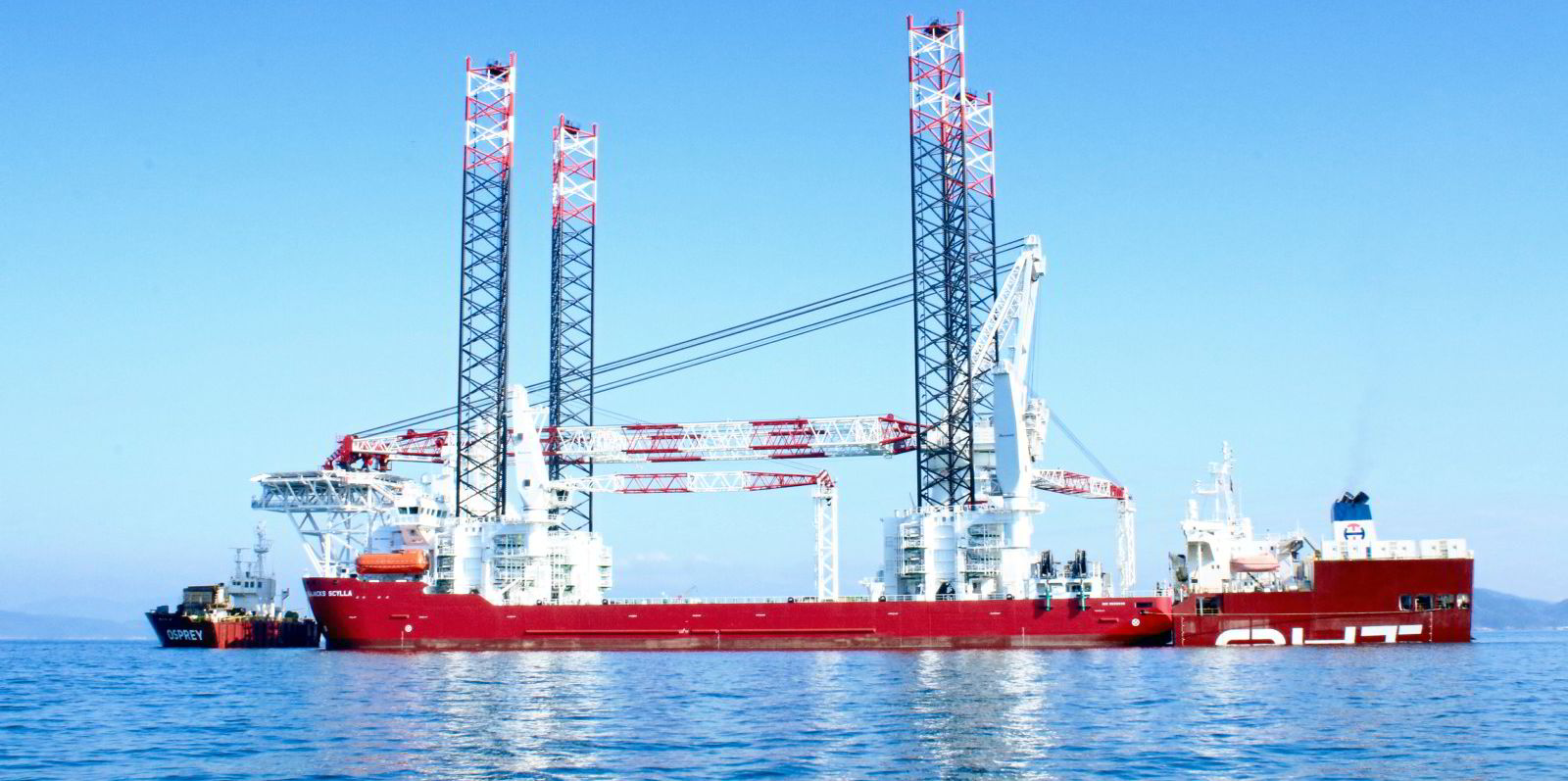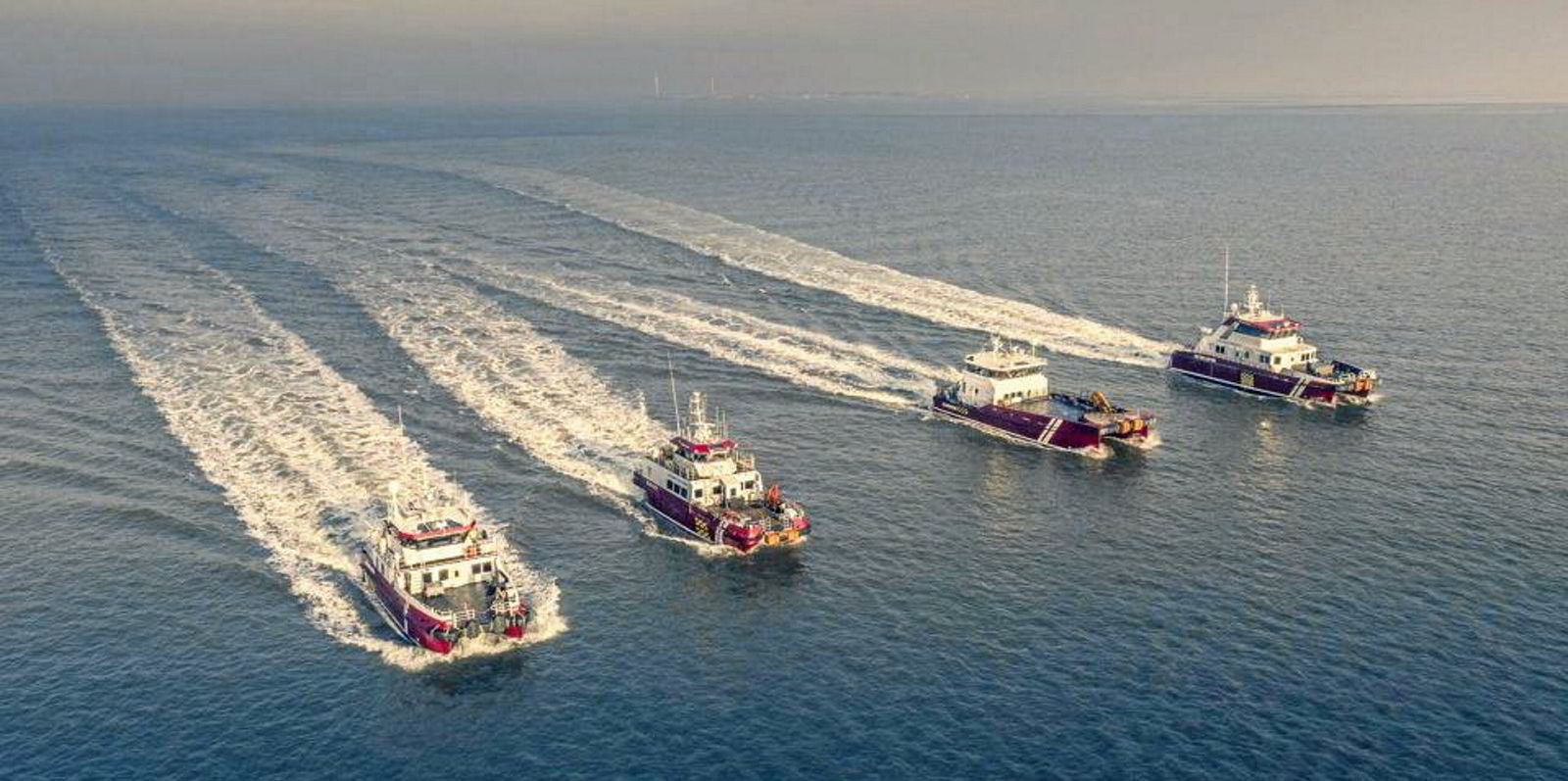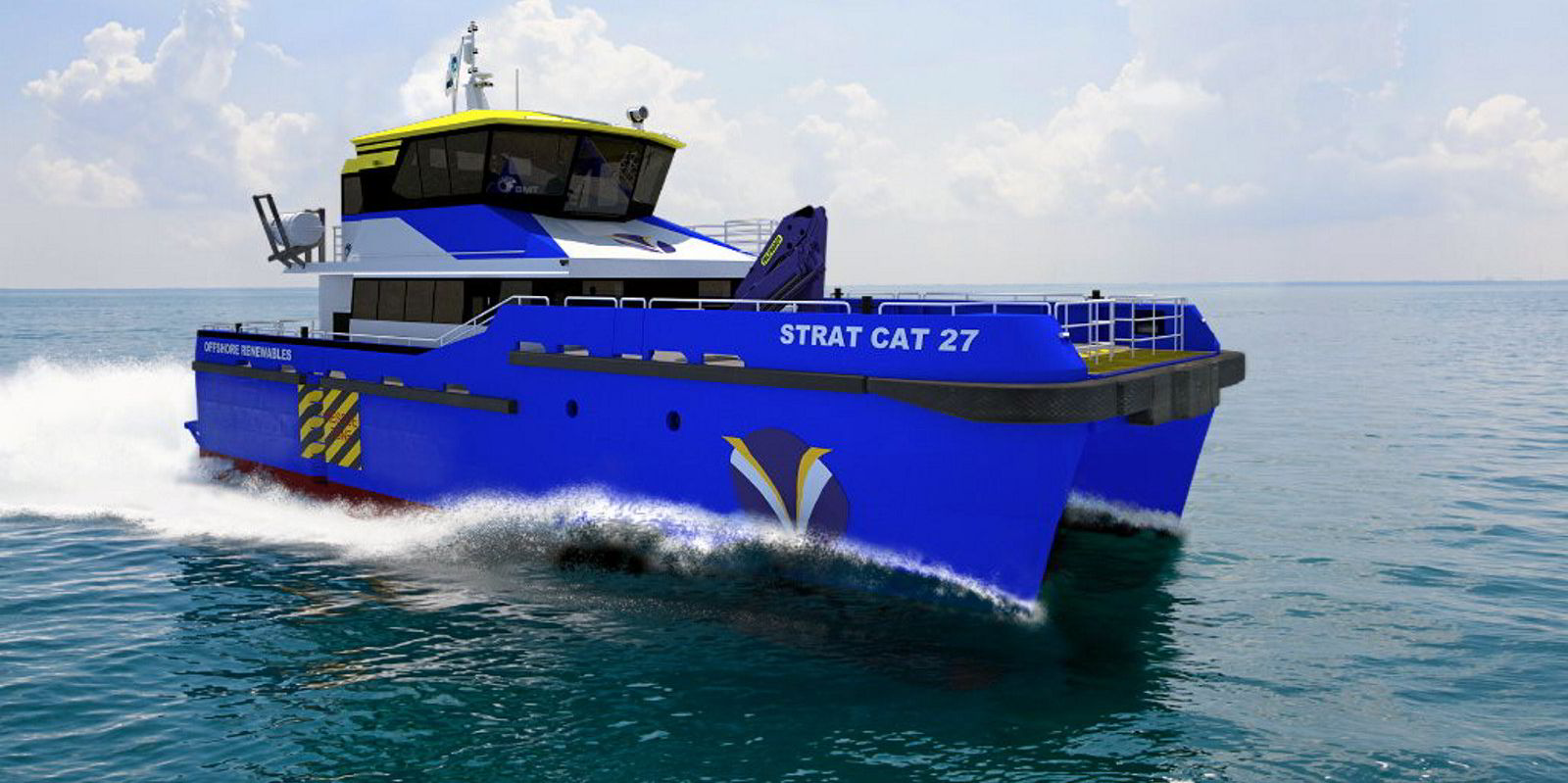Demand from Asian wind farm developers is luring vital installation tonnage away from Europe, Global Renewables Shipbrokers (GRS) believes.
The German shop told TradeWinds that there is "very low availability" of the biggest specialist wind turbine installation vessels (WTIVs) in Europe.
"Many of them have been moved to serve the Far Eastern market and remain busy there," it said.
In addition, the Chinese market has opened up and has given some exemptions to domestic power companies to charter in European WTIV tonnage at short notice, GRS managing partners Matthias Mross and Philippe Schonefeld explained.
One example of this is Eneti's 23,640-gt Seajacks Scylla (built 2015), which is working on the Yuedian Yangjiang Shapa wind farm.
The market for service operation vessels (SOVs) has been more disappointing, however.
"As expected, summer hasn't brought full employment this year. Tonnage has been available for charter also with very short notice, and charter hire has stayed relatively low," GRS said, but it predicted better times ahead.
"We expect the negative trend to end in summer 2022, to the extent that some charterers have already secured some long-term tonnage to cover the summer, in the expectation of a rising market," the executives said.
On the crew transfer vessel (CTV) side, 2021 was a success story in terms of high employment and strong charter rates, the broker argues.
"Generally, there was high demand for CTVs in 2021, especially in the operations & maintenance segment [O&M]," it said.
Social distancing rules meant a sharp increase in demand for 24-passenger CTVs, a trend that GRS said will continue into 2022.
Enquiries speeding up

Rates rose slightly due to limited availability, it said, and decarbonisation is under the spotlight for these kinds of ships.
"By the end of this year, many new low-emissions newbuildings will be delivered and enter the market," GRS said.
The Hamburg-based broker is seeing many more chartering enquiries globally for all types of offshore vessels suitable to support the renewables market.
During construction, a typical offshore wind farm needs an average of 40 vessels of all types, for personnel transfer and accommodation, transport, light and heavy installation and cable-laying.
During the O&M phase, that is reduced to a handful of ships.
GRS said a lack of specialist tonnage means most vessels used for offshore wind work are moonlighting from oil and gas support sectors.
"There is not yet a sufficient number of ships available exclusively designed for the special requirements of the offshore renewables energy sector," it added.
GRS expects this to change quickly, with one or two CTVs being delivered every month.
More than a dozen new SOVs have been ordered and delivered, and in the past year, several WTIVs and large heavylift installation vessels have been contracted.
GRS has itself been growing since 2011, with 15 brokers in total — 13 based in Hamburg and two in Taipei in Taiwan, a major centre for offshore wind energy.







